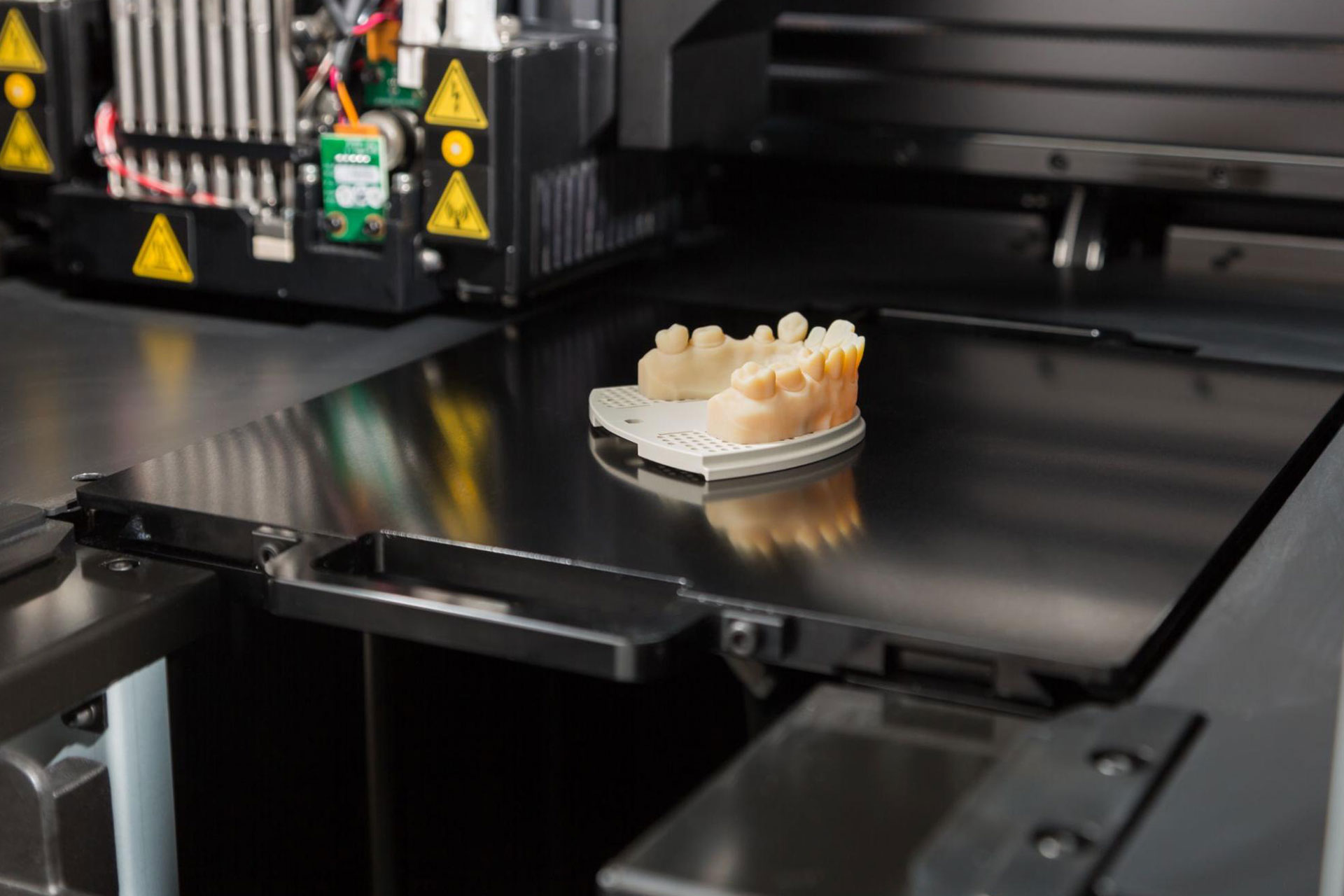There are different ways 3D printing is revolutionizing the world as well as several industries, so it also means the dental industry is no exception. With the help of 3D printing technology, dental professionals are able to provide more efficient, accurate, and personalized treatments to their patients. Not to mention, how it is able to allow more room for customization, cost, and time savings while enhancing the overall patient experience.
In this blog, we have listed down the common 3D printing applications in dentistry:
1. Orthodontics
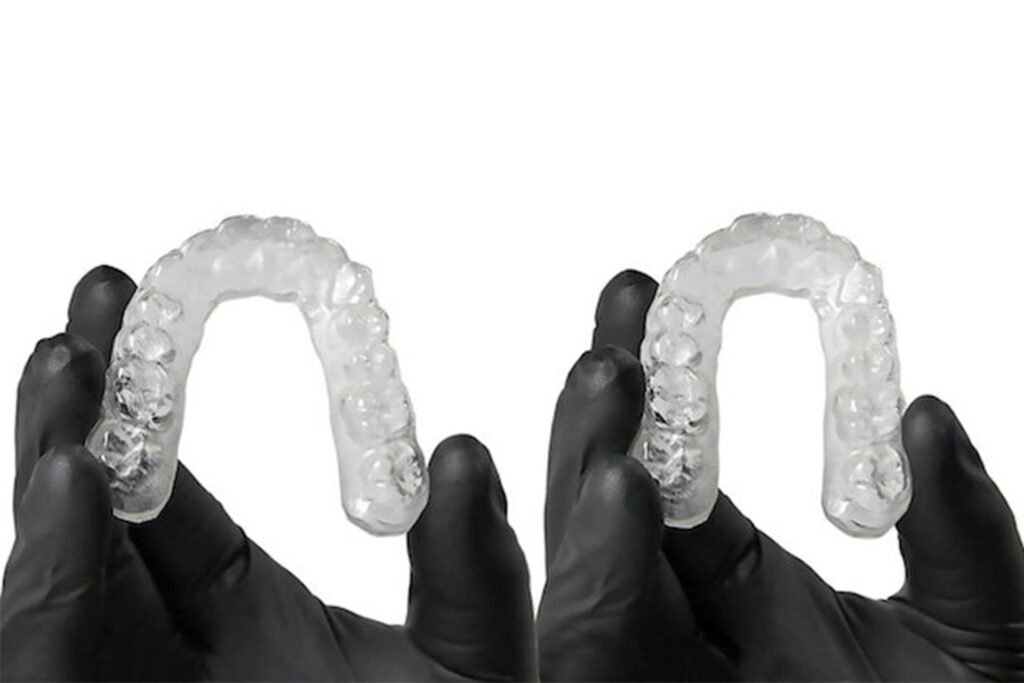
Photo Source: TCT Magazine
3D printing technology is widely used in orthodontics to create customized clear aligners, such as invisalign, retainers, and even tooth replacement materials. Clear aligners are a popular alternative to traditional braces, as they are more discreet and comfortable to wear. 3D printing allows orthodontists to create a series of clear aligners based on the patient’s unique dental anatomy.
Furthermore, with the use of 3D printing in orthodontics, it allows for greater accuracy and precision in the design of the aligners, resulting in a more probable outcome and reducing the need for additional treatments or adjustments.
2. Prosthodontics
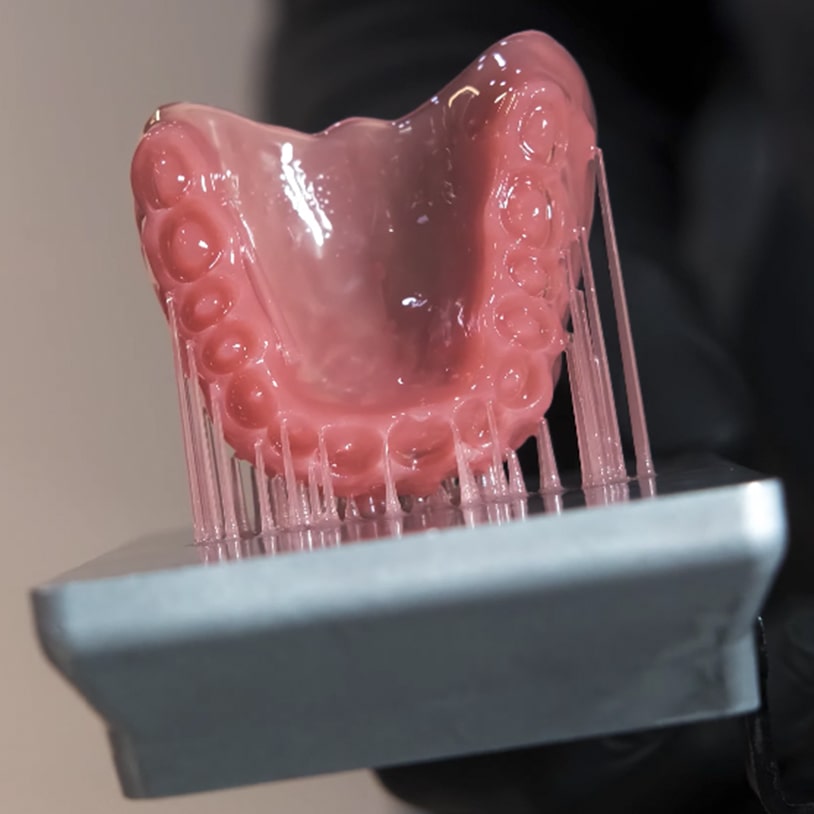
Photo Source: DentaFab
Prosthodontics is another branch of dentistry that uses 3D printing technology. This branch of dentistry is responsible for making dental prosthetics or artificial teeth, including crowns, bridges, and dentures.
Before 3D printing was introduced in the dental industry, prostheses were made by hand, which we all might’ve guessed is difficult as it is a time-consuming and labor-extensive process. Today, the advanced 3D printing technology makes the process much faster and more accurate. It also encourages greater customization and personalization of dental prostheses, improving the outcome for patients.
3. Surgical Guides
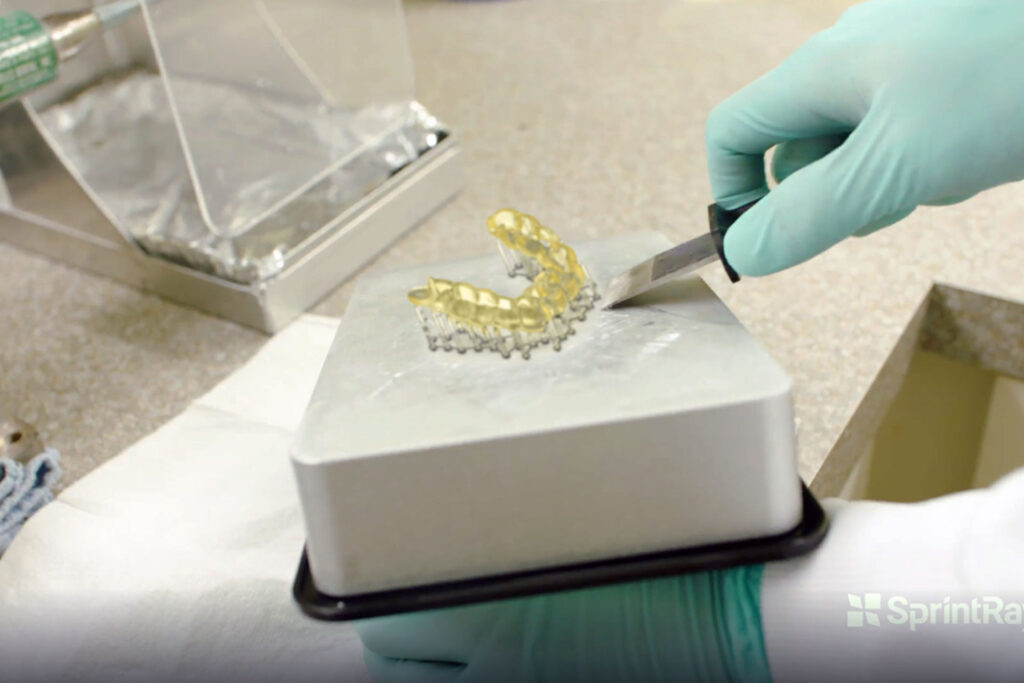
Photo Source: SprintRay
The use of 3D printing technology extends to creating surgical guides specifically for dental implant procedures. These guides are crafted based on the patient’s CT scan data and are printed to precisely fit over the teeth and gums. This enables the perfect placement of dental implants, ultimately increasing the procedure’s success rate and efficiency.
And just like other applications on this list, the use of 3D printing for surgical guides allows for more customization, cost-effectiveness, and time-savings. On top of that, 3D printing technology also minimizes the amount of radiation exposure for patients during implant placement procedures. This is because with traditional methods, patients were required to undergo multiple CT scans to produce surgical guides. But with 3D printing, the initial CT scan is used to create the surgical guide, eliminating the need for additional scans.
4. Education and Training
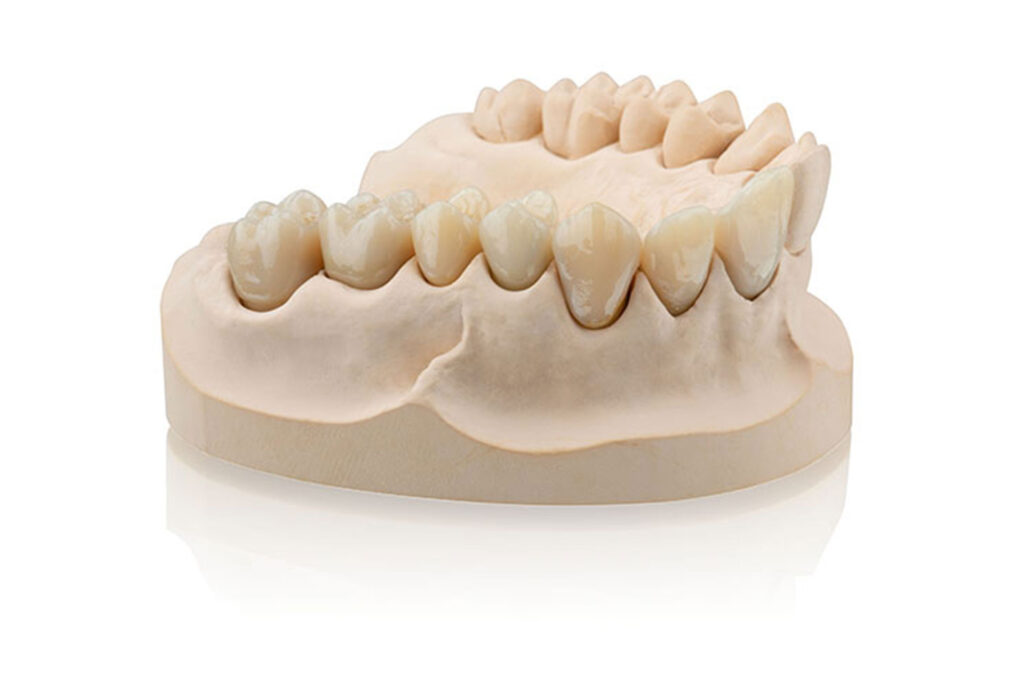
Photo Source: Dentistry Today
3D printing is also used in dental education and training. Dental schools and training programs use 3D printing to create models of teeth and gums for students to practice on. These models are accurate replicas of real teeth and can help students develop their skills before working on real patients.
3D printing is truly transforming the field of dentistry by providing precise, efficient, and personalized treatments. The applications mentioned above are just a few of the many applications of 3D printing in dentistry, and it won’t be surprising if in the coming years, we will expect to see even more innovative uses of 3D printing in the dental industry.
Looking for quality 3D printing in the Philippines? Contact us today to know more about our products!

